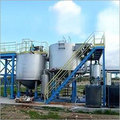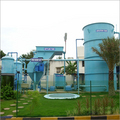Sewage treatment plant plays an important role for the mankind. The main function of these plants is to make the water of the sewage clean that comes from home, commercial and industrial sectors. The treatment of sewage water has become the need of the hour as it stops spreading the diseases and illness caused by the sewage water. It helps society in making the water as well as environment clean. The sewage treatment plant works composed of 3 stages that make its working more efficient. The three stages of these plants include the primary stage, the secondary stage and the tertiary stage.
In the primary stage, the contaminants that are easy to eliminate are taken out from the wastewater. These substances may include oils, grease, and fats that can be easily removed from the surface area. The solids things like grits, stones, rocks, etc. are strained.
At the secondary stage, the removal of biological contaminants in wastewater takes place. A number of methods are processed there to eradicate the unwanted elements. This stage is considered as the important stage of the treatment plants.
At the tertiary treatment, which is the last stage of the plant, the water is get cleaned purely to get discharged in the environment. This is composed of man-made or artificial systems that help in filtration. At this stage, the nitrogen and phosphorous content is eliminated from the water. In addition to this, the water is further disinfected using chemicals like chlorine as well as treatment of UV.
Through these stages, the final water that comes out is clean and free from pollutants that can be safely released to the environment.
In the primary stage, the contaminants that are easy to eliminate are taken out from the wastewater. These substances may include oils, grease, and fats that can be easily removed from the surface area. The solids things like grits, stones, rocks, etc. are strained.
At the secondary stage, the removal of biological contaminants in wastewater takes place. A number of methods are processed there to eradicate the unwanted elements. This stage is considered as the important stage of the treatment plants.
At the tertiary treatment, which is the last stage of the plant, the water is get cleaned purely to get discharged in the environment. This is composed of man-made or artificial systems that help in filtration. At this stage, the nitrogen and phosphorous content is eliminated from the water. In addition to this, the water is further disinfected using chemicals like chlorine as well as treatment of UV.
Through these stages, the final water that comes out is clean and free from pollutants that can be safely released to the environment.

